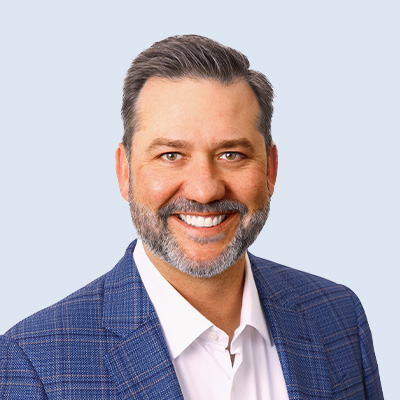Matt Bartels: Welcome to Media Sales Confidential. Today we have a very special episode. We have Mr. Alex Danis from the Alexander Group. Alex is one of our rising stars in the organization and he’s going to talk to us a little bit about some of the recent information that we’ve been able to gather around profitability. So as we know, that’s a huge, huge topic for everybody across the board these days, regardless of industry. We’ve been able to look at recent research that comes from over 100 of the leading media and tech organizations globally around the world. Also, layer in some of the Alexander Group client engagement along with their own benchmarks to have this conversation. So really excited to have Alex with us here today. Alex, welcome.
Alex Danis: Yeah, thanks Matt, for the introduction. Appreciate it. Excited to dive into this topic and conversation.
Matt Bartels: So let’s talk about it. Why is profitability such a big focus for companies right now?
Alex Danis: There are so many reasons. Some of the big ones, the big pillars are just economic uncertainty. So when you’re thinking about what’s going on in the world today, buyer power is decreasing, inflation is increasing. And that affects a few other points. But there’s a lot of uncertainty in terms of what can we actually do, what’s financially possible. So there’s a lot of retrenchment back into what are we already strong at, where are we generating revenue today and how do we make that more profitable? And generally what you see is, well, we can take a step back, we can become more profitable, we can build up this cash reserve and we can start developing new strategies so we can start thinking about, well, now that we have the cash, we can buy these distressed assets, these companies that are struggling in the market today and weren’t able to adequately change their strategies or their go-to-market to really effectively retain more dollars.
Matt Bartels: Sure, I mean, the number one thing that leaders have to think about is how do you continue to drive growth – that makes a lot of sense, but you have to do it in an efficient way. And I think that that’s one of the things that we’ve been seeing in the research of what leaders have been able to do, regardless of the economic environment, is really put the bets in the right place. Now, looking at profitability, how long do you think this is going to be a focus area for organizations?
Alex Danis: Any strategy that companies are going to put in place is probably going to be around for 1 to 2 years minimum, especially right now where everybody else is engaging in these profitability-focused practices. So really rightsizing organizations. We’re hearing a lot about layoffs and just resizing different groups to be effective. So what you’re going to see is pretty short-term actions that will likely lead to a regrouping within a year or two to determine: was that enough or was that too much? Should we go back to growth strategies?
Matt Bartels: Yeah, so that’s 1 or 2 years that makes sense. So when you look at the companies, what specifically are they doing? What are the tactics that they’re doing right now to drive that profitability?
Alex Danis: Sure. So one of the elements of distinction that I kind of wanted to dive into as well is there’s new growth and old growth. Right? So new growth meaning let’s dive into new products, new markets. That’s typically a little more expensive than saying, hey, we’ve been really good at selling these trucks. Let’s sell more of these trucks to the audience. So, what we want to point out with that is that there are varied strategies in the industry that these different companies are leveraging to really drive that profitability. So some of the industry agnostic strategies that we’re hearing and we’re seeing from our research with clients we’ve worked with is vertical integration of capacity. So there’s a few roles that can be consolidated and save dollars there. There’s preferential treatment that can be driven so that companies are able to really maximize the dollars that they’re getting out of these acquisitions. Number two, similar vein, horizontal integration: do more with less, because when you start creating more efficient back-end structures where we know we can serve ads from one server, for example, we can build up one relationship that is programmatic and able to translate this to all the different assets and categories that we have from a publishing standpoint. So harping in on websites, for example, and publishing pages, that’s a type of strategy where you can simplify and you can probably become more effective because what you might see is that you’ll get these economies of scale benefits where you’re able to command more of a pricing premium dollars, but also you’re going to be better at getting targeted ads to the right audience instead of serving, let’s say, deodorant advertisements for Old Spice to just a general financial news network, you might actually have, say, an automobile enthusiast page as well in your repertoire that wasn’t getting that targeted advertising or as many dollars behind it. So what that means is your ROI for those relationships, for those advertising dollars, is going to increase by being fully horizontally integrated.
Matt Bartels: From a sales coverage perspective. One of the interesting findings was that high growth, high profitability organizations where they believed that they were able to drive profitability equally throughout the sales process, throughout the pre-sales process, during the sales process, and then the post-sales process. Once you’ve got a client on board, they felt like they could continuously focus and drive profitability, which was a stark contrast to the low growth, low profitability organizations that felt like they could only drive profitability; 70% of it was driven in the pre-sales part of the sales process. What what’s going on there? How do you reconcile that? What are the high growth, high profitability organizations doing differently or thinking differently than the others?
Alex Danis: Yeah. So really interesting point to bring up because the high-growth, high-profit companies and the low-growth, low-profit companies are actually bringing in about the same amount of new business from net new customers. So it’s a really important distinction to make. Yeah. And what we see is that the high-growth, high-profit companies, they’re maximizing existing relationships because it is expensive to build new ones. It’s much cheaper to be really, really good at delivering what the client needs, saying either do you want to buy more or can you introduce us to somebody else that is working in sort of this ancillary function that we can really work well together with because we’ve been delivering so strongly. So, what we saw is about 64% higher expansion dollars from those high-growth, high-profit companies versus the low-growth, low-profit companies. So what they’re doing is they’re keying in on those important relationships and they are just driving those dollars from the established people that they’ve been working with.
Matt Bartels: Sure. Easier said than done, though, Alex. Are they doing something different with the roles or are they doing something different with messaging or is it just a different mindset?
Alex Danis: What we see is a few different approaches in terms of coverage for accounts. So you will typically hear, okay, we need a good segmentation and a good coverage model. We need to make sure we’re going to market effectively. But what that really means is each client is going to have different needs and how do we effectively group those clients with different needs to make sure that we’re able to provide a sales force or just reps and interaction that will service those needs? So higher level clients, let’s say, you know, in media when we’re thinking about the big agencies that are involved, they’re looking more for strategic relationships because they’re already spending 50 to $100 million in these buckets of relationships that they’re managing. So what they need is an element of, well, hey, we actually have an idea on how you can increase that ROI. So you’re spending 100 million and you’re happy with that, but we can actually increase your reach or performance of these ads by 20% by approaching this same audience in a different fashion. So that level of expertise, that consultative selling is a differentiator and you need more experienced sales reps to run that type of sale. So the reason I’m bringing up that really specific example is when we think about segmentation, we don’t want to allocate those reps that are able to have that high and elevated type of conversation with the client that’s spending $10,000 a year.
Matt Bartels: What are they doing on the back end? I know that the account management role has been a big topic of conversation and I know that’s a big driver of the ongoing customer success and profitability of deals and clients. What are they doing differently on the back end?
Alex Danis: Trying to make sure that the right people are having the right resources. So, what we mean by that is if there’s tech issues just driving them right to the appropriate tech support resource so that the account manager that really won’t be anything more than a conduit isn’t wasting their time having a conversation. What a lot of people are doing is they are fully automating or getting as close to full automation as they can for those low-dollar accounts, for tech support, for, say, being able to purchase advertising space or being able to actually broadcast their own materials that they’ve created. So removing that expense of human element from low potential, low spend accounts, Yeah.
Matt Bartels: The account management function then has shifted from being more service in the high growth, high profitability organizations to definitely more sales. You saw that the other day that said that over 55% of them now have actual real sales responsibilities and real sales goals attached to them. Talk to me about that.
Alex Danis: What needs to be done is have a balance, right, where the account manager is typically going to be a little bit more salesy now. They’re going to be identifying those opportunities, raising them to the client, but you still also have to have sort of that circle of trust where, hey, these are some of the people that aren’t necessarily selling me on stuff. And those people will come in and assist in the consultative sale by providing that knowledge, but the account manager is the one that’s orchestrating it and getting the client to say, okay, we’re doing a fantastic job, we’re getting a greater ROI, let’s spend more.
Matt Bartels: Given the environment that we’re in right now. When we step back, how do you think organizations should be positioning themselves going forward?
Alex Danis: Yeah. So going back to the conversation that we’re having earlier about, well, right-sizing an organization, vertical integration, horizontal integration, there’s a lot of restructuring going there and it’s sort of refocusing on, well, what are we really good at? What are we able to dive into, sink our teeth into, and we know we’re going to execute well on this? Because that’s where you start thinking about, well, these are our best capabilities and this is how we build a large bank of cash. So now with that profitability focus, you have these companies that double down on what they’re good at. And now instead of that growth that they may have not gotten for the last year or two, it can make up for it via acquisitions by having that stronger financial position. So it springs, it basically is a springboard forward into a much higher opportunity market if they’re able to regroup, refocus and really drive that profitability focus.
Matt Bartels: Love it. And there you have it from the Alexander Group, Rising Star. Club, Mr. Alex, Danis, thank you so much for joining us on Media Sales Confidential with Matt Bartels.






